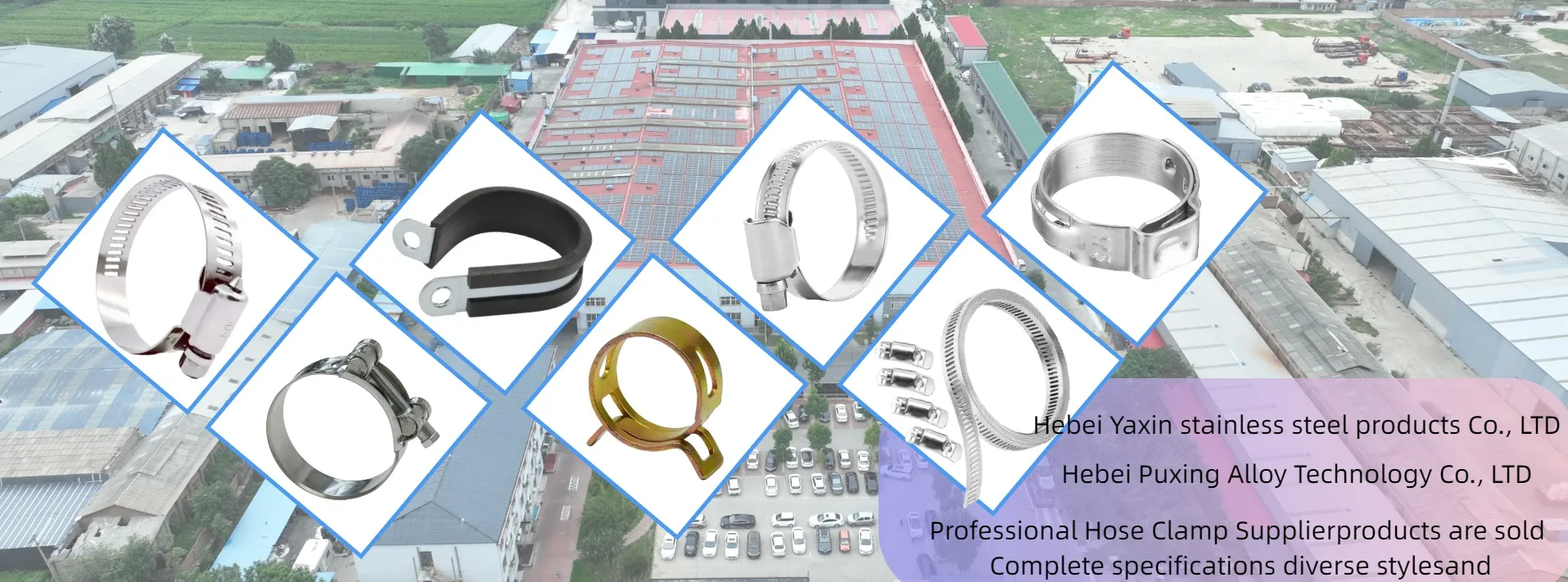- Phone:+86-17331948172 +86-0319-8862898
- E-mail: inquiry@puxingclamp.com
Aug . 25, 2025 02:20 Back to list
Premium Adjustable Stainless Steel Hose Clamps for Secure Sealing
Introduction to Advanced Clamping Solutions
In the realm of industrial fluid conveyance, the integrity and reliability of connections are paramount. From critical hydraulic lines to intricate ventilation systems, a secure seal prevents leaks, maintains operational efficiency, and ensures safety. Central to achieving this security is the adjustable stainless steel hose clamp, a seemingly simple component that plays an indispensable role across countless applications. Its design, combining robust materials with a versatile adjustment mechanism, offers a superior fastening solution compared to conventional alternatives. This article delves into the technical intricacies, manufacturing excellence, diverse applications, and strategic advantages of these essential fasteners, particularly focusing on their role in modern B2B sectors demanding uncompromised performance.
The demand for resilient and adaptable clamping solutions continues to grow, driven by increasingly complex operating environments and stringent regulatory standards. Understanding the nuances of material selection, design principles, and application-specific benefits is crucial for engineers, procurement specialists, and project managers seeking optimal system performance and longevity.
Industry Trends in High-Performance Clamping Technology
The industrial landscape is continuously evolving, pushing the boundaries for component performance. Key trends influencing the market for hose clamps include:
- Increased Demand for Corrosion Resistance: Industries like marine, chemical processing, and wastewater treatment face highly corrosive environments, necessitating fasteners made from premium stainless steel grades (e.g., 304, 316) for extended service life.
- Adaptability for Diverse Materials: With the rise of advanced composite and multi-layered hoses, clamps must offer precise and consistent clamping force without damaging the hose material.
- Vibration and Thermal Cycle Resilience: Automotive and aerospace applications require clamps that maintain integrity under constant vibration and wide temperature fluctuations, preventing loosening and leakage.
- Sustainability and Lifecycle Cost Optimization: There's a growing emphasis on products with longer service lives, reducing replacement frequency and associated waste. This drives demand for high quality adjustable hose clamp solutions that offer superior durability.
- Supply Chain Reliability: Identifying a dependable hose clamp adjustable supplier capable of delivering consistent quality and on-time is paramount for mitigating project risks. Many organizations now seek partnerships with established hose clamp adjustable suppliers who offer comprehensive product ranges and customization options.
These trends underscore the critical need for advanced clamping solutions that go beyond basic functionality, offering enhanced durability, precise control, and robust performance under demanding conditions.
Understanding the Adjustable Stainless Steel Hose Clamp: Structure and Materials
The core design of an adjustable stainless steel hose clamp typically consists of three primary components working in concert to create a secure, radial compression:
- The Band: This is the circumferential strap that encircles the hose. For superior performance, it is commonly made from stainless steel grades like SS201 or SS304. SS201 offers good corrosion resistance at a lower cost, suitable for general-purpose applications, while SS304 provides excellent resistance to a wide range of atmospheric and chemical exposures, making it ideal for more demanding environments. The band often features perforations or continuous threading to engage with the worm screw.
- The Housing (or Bridge): This component securely holds the worm screw and provides the mechanism for tightening the band. It's typically spot-welded or crimped to one end of the band and engineered for high torsional strength to withstand significant tightening torque. The design ensures even pressure distribution around the hose.
- The Worm Screw: Made from galvanized steel or stainless steel (often matching the band's grade for galvanic corrosion resistance), this screw engages with the perforations or threading on the band. As the screw is turned, it pulls the band through the housing, progressively reducing the clamp's diameter and applying uniform radial pressure to create a leak-proof seal.
This simple yet ingenious mechanism allows for precise adjustment of clamping force, making it highly versatile for various hose sizes and materials.
Manufacturing Process: Precision Engineering for Durability
The production of a reliable adjustable stainless steel hose clamp is a testament to precision engineering and stringent quality control. The process ensures that each component contributes to the overall strength, durability, and sealing integrity of the final product. Key stages include:
1. Material Sourcing and Preparation:
- Stainless Steel Coils: High-grade stainless steel coils (SS201, SS304, or SS316 depending on specification) are procured from certified mills, ensuring material composition adheres to international standards like ASTM A240 for chromium-nickel alloys.
- Wire Rods: For the worm screws, suitable carbon steel or stainless steel wire rods are selected, meeting specific tensile strength and malleability requirements.
2. Precision Stamping and Forming:
- Band Production: Stainless steel coils are fed into high-speed stamping presses that precisely cut, perforate, and form the clamp bands, ensuring uniform width, thickness, and hole patterns for consistent worm gear engagement. This process adheres to tight tolerances specified by standards like SAE J1508.
- Housing Fabrication: The housing components are also produced via multi-stage stamping, involving bending, piercing, and coining operations to create the complex geometry that securely cradles the worm screw and interfaces with the band.
- Screw Manufacturing: Worm screws are typically cold-formed from wire rods. This process involves heading (for the screw head), roll threading (for the precise thread profile), and sometimes heat treatment to achieve desired hardness and strength. Galvanization or passivization treatments are applied for corrosion resistance if not already stainless steel.
3. Assembly and Welding:
- Automated Assembly: Modern manufacturing facilities utilize automated assembly lines where bands, housings, and screws are precisely brought together.
- Spot Welding/Crimping: The housing is securely attached to one end of the band, typically through resistance spot welding or robust crimping, ensuring a strong, permanent bond capable of withstanding high torque and operational stresses.
4. Surface Treatment and Finishing:
- Passivation: Stainless steel components undergo passivation to remove free iron contaminants and create a passive oxide layer, significantly enhancing corrosion resistance. This conforms to ASTM A967 or AMS 2700 standards.
- Deburring: Edges are deburred to prevent hose damage during installation and improve handling safety.
5. Quality Control and Testing:
- Material Verification: Spectroscopic analysis verifies material composition.
- Dimensional Inspection: Calipers, micrometers, and optical inspection systems ensure precise dimensions.
- Torque Testing: Clamps are tested to ensure they can withstand specified tightening torques without stripping the screw or deforming the band, often exceeding ISO 9001 and ANSI requirements.
- Corrosion Resistance Testing: Salt spray testing (e.g., ASTM B117) assesses corrosion resistance.
- Vibration Testing: For specific applications, clamps undergo vibration fatigue testing to ensure integrity under dynamic loads.
This rigorous manufacturing and testing regimen ensures that each metal adjustable hose clamps meet the highest standards for performance and longevity, leading to an impressive service life even in challenging environments.
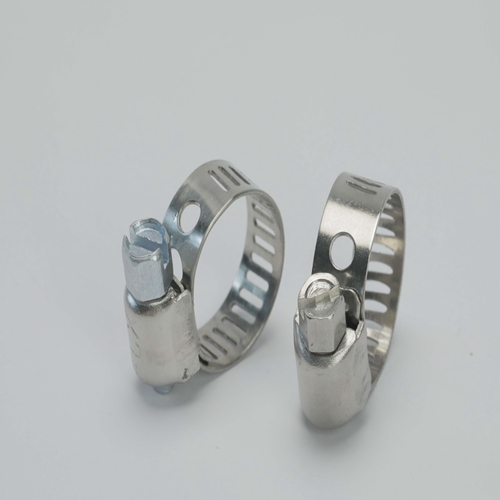
Technical Specifications and Performance Parameters
Selecting the correct adjustable stainless steel hose clamp requires a thorough understanding of its technical specifications. These parameters dictate the clamp's suitability for specific applications and its expected performance over time.
| Parameter | Description | Typical Range/Value |
|---|---|---|
| Material Grade (Band & Housing) | Corrosion resistance & strength | SS201, SS304, SS316 |
| Material Grade (Screw) | Torsional strength & thread integrity | Galvanized Steel, SS304, SS316 |
| Band Width | Clamping force distribution | 8mm, 12.7mm (1/2"), 14.2mm (9/16") |
| Band Thickness | Tensile strength & durability | 0.6mm - 0.9mm |
| Clamping Diameter Range | Adjustability for hose sizes | 6mm - 300mm+ (dependent on model) |
| Maximum Installation Torque | Recommended tightening force | 4.5 Nm (40 in-lbs) - 7.9 Nm (70 in-lbs) |
| Temperature Range | Operational temperature limits | -50°C to +150°C (Material Dependent) |
| Salt Spray Resistance | Corrosion resistance (ASTM B117) | 120 hours (SS201) to 500+ hours (SS304/316) |
| Feature | SS201 | SS304 | SS316 (For specialized applications) |
|---|---|---|---|
| Corrosion Resistance | Good (General-purpose, mild environments) | Excellent (Broad range of atmospheric & chemical) | Superior (Highly corrosive, chlorides) |
| Strength | High Tensile Strength | Good Strength & Ductility | Excellent Strength & Creep Resistance |
| Cost Effectiveness | High (Lower material cost) | Moderate | Lower (Higher material cost) |
| Typical Applications | Home appliances, less aggressive industrial settings | Automotive, plumbing, food processing, general industrial | Marine, chemical plants, medical, extreme outdoor |
Understanding these specifications allows for informed decisions, ensuring the chosen clamp provides optimal performance, safety, and longevity for the intended application, ultimately contributing to systems that are not only robust but also energy-efficient due to minimized leakage.
Application Scenarios Across Diverse Industries
The versatility and reliability of the adjustable stainless steel hose clamp make it indispensable across a multitude of industrial sectors. Its ability to provide a secure and lasting seal under varying conditions is critical for operational success.
- Petrochemical Industry: Used in refineries and processing plants to secure hoses carrying fuels, chemicals, and gases. The corrosion resistance of stainless steel is vital for resisting degradation from aggressive media and harsh outdoor exposure. Advantages here include extended service life and reduced maintenance, contributing to operational safety and energy saving by preventing leaks.
- Metallurgy: In steel mills and metal processing facilities, these clamps secure cooling lines, hydraulic hoses, and pneumatic systems that operate under high temperatures and in dusty, abrasive environments. Their robust construction ensures integrity despite severe mechanical stresses.
- Water Supply & Drainage: Essential for municipal water treatment plants, pumping stations, and irrigation systems, where they secure flexible connections for water and wastewater lines. The inherent corrosion resistance prevents rust and ensures a clean water supply while guaranteeing system integrity in drainage applications.
- Automotive Sector: Widely used in vehicles for securing coolant hoses, fuel lines, and air intake systems. Their resistance to vibration and thermal cycling is crucial for engine reliability and performance.
- Marine Applications: On boats and ships, stainless steel clamps are preferred for securing exhaust systems, water lines, and fuel hoses due to their superior resistance to saltwater corrosion, a critical factor for safety and longevity at sea.
- Food & Beverage Processing: In environments requiring strict hygiene, SS304 and SS316 clamps are used for securing fluid transfer lines, ensuring no contamination and ease of cleaning, meeting FDA compliance standards.
- Agriculture: For irrigation systems, machinery, and equipment, these clamps provide durable connections for water, hydraulic fluids, and air, often in challenging outdoor conditions.
In each of these sectors, the ability of the clamp to withstand specific environmental challenges, provide a reliable seal, and offer longevity translates directly into reduced downtime, lower operational costs, and enhanced system safety.
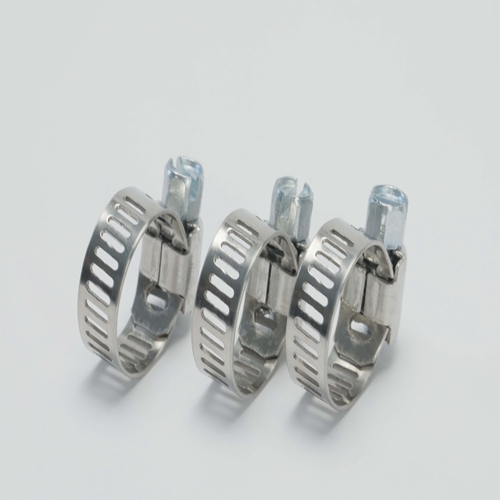
Key Technical Advantages of Stainless Steel Hose Clamps
The widespread adoption of the adjustable stainless steel hose clamp is driven by a series of compelling technical advantages:
- Superior Corrosion Resistance: Stainless steel, particularly grades like SS304 and SS316, offers exceptional resistance to rust, oxidation, and chemical degradation. This is crucial in harsh industrial, marine, and outdoor environments, significantly extending the service life of connections and preventing catastrophic failures caused by material degradation. This directly contributes to systems that operate without costly, unforeseen interruptions.
- High Durability and Longevity: The inherent strength and robust construction of stainless steel provide excellent resistance to mechanical stress, vibration, and temperature fluctuations. This ensures the clamp maintains its integrity and clamping force over extended periods, reducing the need for frequent replacements and associated maintenance costs.
- Precise and Consistent Clamping Force: The worm drive mechanism allows for fine adjustments, enabling technicians to apply the exact amount of clamping force required for a secure, leak-proof seal without overtightening and damaging the hose. This precision is vital for sensitive fluid transfer systems and contributes to overall energy saving by preventing pressure loss.
- Ease of Installation and Reusability: Designed for straightforward installation with common tools, these clamps can often be adjusted or repositioned without damage, offering flexibility during assembly and maintenance. In many scenarios, high-quality clamps can be reused, further enhancing cost-effectiveness.
- Temperature Resilience: Stainless steel maintains its mechanical properties across a broad range of temperatures, from sub-zero conditions to elevated operational heat, making these clamps suitable for diverse thermal environments.
- Reduced Galvanic Corrosion Risk: When both the band and screw are made from the same grade of stainless steel (e.g., all SS304), the risk of galvanic corrosion between dissimilar metals is minimized, ensuring a more durable and reliable connection. This is a critical factor for long-term reliability.
These advantages collectively position metal adjustable hose clamps as a preferred choice for critical industrial applications where performance, safety, and long-term cost-efficiency are paramount.
Vendor Comparison: Choosing the Right Supplier
Selecting the right hose clamp adjustable supplier is as crucial as selecting the right product. A reputable supplier offers not just quality products but also technical expertise, reliable service, and a commitment to customer satisfaction. Key considerations for B2B decision-makers include:
- Certifications and Compliance: Verify that the supplier adheres to international quality management systems such as ISO 9001. Product-specific certifications (e.g., SAE J1508, DIN 3017, ASTM material standards) are also essential, confirming the quality and performance of the adjustable stainless steel hose clamp.
- Material Traceability: A transparent supplier provides full traceability of raw materials, ensuring that the stainless steel used meets the specified grades (e.g., SS201, SS304) and has undergone proper treatments like passivation.
- Testing Protocols: Inquire about the vendor’s in-house testing capabilities, including torque testing, salt spray corrosion tests, and dimensional accuracy checks. Rigorous testing indicates a commitment to delivering a high quality adjustable hose clamp.
- Customization Capabilities: For unique applications, the ability to provide customized solutions (e.g., specific band widths, diameters, screw types, or even specialized materials like SS316 for extreme conditions) is a significant advantage.
- Technical Support and Engineering Expertise: A knowledgeable vendor offers technical assistance for product selection, installation guidance, and troubleshooting. Their engineering team can provide valuable insights for complex applications.
- Lead Times and Logistics: Assess the supplier's capacity for efficient order fulfillment, inventory management, and global logistics capabilities to ensure timely delivery and minimize project delays.
- Industry Reputation and Client Base: Investigate the supplier's history, years in service, and notable partner clients. Positive testimonials and long-standing client relationships are indicators of reliability and trustworthiness.
By thoroughly vetting potential hose clamp adjustable suppliers against these criteria, businesses can forge partnerships that guarantee consistent access to superior products and expert support.
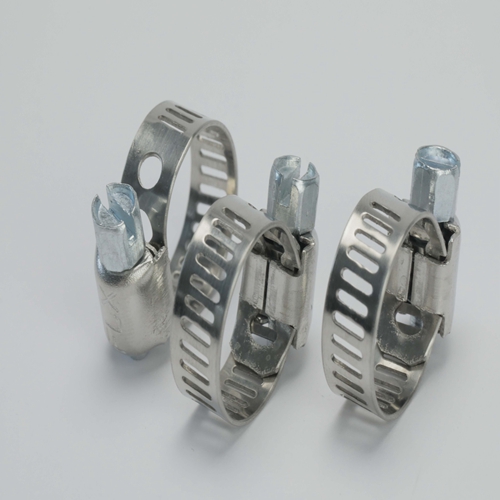
Customized Solutions and Engineering Support
While standard adjustable stainless steel hose clamp products meet a broad range of industrial needs, many specialized applications demand tailored solutions. Leading hose clamp adjustable suppliers offer comprehensive customization services, enabling industries to overcome unique technical challenges.
Bespoke Design and Manufacturing:
- Material Variations: Beyond standard SS201 and SS304, suppliers can produce clamps from SS316 for enhanced resistance to chlorides and pitting corrosion, vital in marine or chemical environments. Specialized coatings for specific chemical resistance or insulation can also be applied.
- Non-Standard Dimensions: Custom band widths, thicknesses, or exceptionally large/small diameters can be engineered to fit unusual hose or pipe configurations.
- Specialized Fastening Mechanisms: While worm drives are common, other mechanisms like T-bolt clamps or spring-loaded clamps might be offered for specific pressure, vibration, or thermal expansion requirements.
- Integrated Solutions: For complex assemblies, suppliers can work with clients to design integrated clamping solutions that combine multiple functions or interface with other components, simplifying installation and improving overall system integrity.
Collaborative Engineering Support:
True value from a supplier often comes from their engineering support. This includes:
- Application Analysis: Experts can analyze specific application parameters (pressure, temperature, medium, vibration, installation space) to recommend the most suitable clamp design and material.
- Prototyping and Testing: Custom designs can undergo rapid prototyping and rigorous in-house testing to validate performance before full-scale production.
- Performance Optimization: Working alongside client engineers, suppliers can help optimize clamping solutions for factors like weight reduction, increased clamping force, or simplified assembly, contributing to overall project efficiency and cost-effectiveness.
This collaborative approach ensures that even the most demanding requirements for metal adjustable hose clamps are met with precision and innovation.
Real-World Application Case Study: Offshore Oil Rig Hydraulic Systems
Challenge: An operator of an offshore oil platform faced recurring failures in hydraulic fluid transfer lines. Standard galvanized carbon steel clamps were experiencing rapid corrosion due to the highly saline and humid marine environment, leading to frequent leaks, system downtime, and expensive replacement operations. The critical nature of these lines, supporting drilling and lifting equipment, demanded an ultra-reliable and corrosion-resistant fastening solution.
Solution: After consulting with a specialized hose clamp adjustable supplier, the operator decided to replace all existing clamps with high-grade SS316 adjustable stainless steel hose clamp units. These clamps featured a full SS316 band, housing, and screw assembly, ensuring maximum resistance to chloride-induced pitting and crevice corrosion, which are prevalent in marine settings.
- Material Upgrade: The shift from galvanized steel to SS316 offered superior corrosion resistance, aligning with NACE MR0175/ISO 15156 standards for materials in H2S-containing environments.
- Precision Clamping: The worm-drive mechanism allowed for precise torque application, crucial for maintaining hydraulic system integrity under high operational pressures and minimizing pressure drops.
- Enhanced Durability: The robust construction of the SS316 clamps provided excellent vibration resistance, preventing loosening despite constant platform movement and machinery operation.
Results: Over a 24-month period following the upgrade, the oil rig experienced a dramatic reduction in hydraulic system leaks and unscheduled maintenance related to clamp failures. The service life of the clamping connections increased by over 300%, leading to significant cost savings in terms of replacement parts, labor, and reduced downtime. The enhanced reliability also contributed to improved safety ratings for the platform's operations. This case exemplifies how investing in a high quality adjustable hose clamp tailored to specific environmental demands can yield substantial long-term benefits.
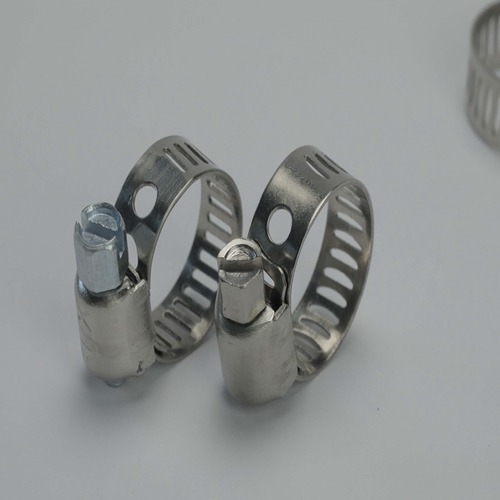
Ensuring Trustworthiness: FAQs and Support
Building trust with B2B clients requires transparency, clear communication, and robust support systems. Here’s how a reliable hose clamp adjustable supplier addresses common inquiries and commitments:
Frequently Asked Questions (FAQs):
-
Q: What is the difference between SS201, SS304, and SS316 adjustable stainless steel hose clamps?
A: SS201 is a cost-effective option offering good corrosion resistance for general, non-aggressive environments. SS304 provides excellent all-around corrosion resistance, making it suitable for most industrial and outdoor applications. SS316 offers superior resistance to chlorides and pitting, ideal for marine, chemical, and highly corrosive environments. Your choice should depend on the application's specific environmental conditions and chemical exposure.
-
Q: How do I select the correct size of adjustable stainless steel hose clamp?
A: Measure the outside diameter (OD) of your hose or pipe, including any fitting if applicable. Select a clamp whose minimum and maximum clamping range encompasses this measured OD. Ensure there is enough overlap for secure tightening.
-
Q: What is the recommended tightening torque for these clamps?
A: Recommended tightening torque varies by clamp size and design, typically ranging from 4.5 Nm (40 in-lbs) to 7.9 Nm (70 in-lbs). Always refer to the manufacturer's specific product data sheet to avoid overtightening, which can damage the hose or clamp, or undertightening, which can lead to leaks.
-
Q: Can adjustable stainless steel hose clamps be reused?
A: While high-quality stainless steel clamps are durable, it's generally recommended to replace them, especially in critical applications, if they show signs of damage, deformation, or excessive wear. For non-critical applications, they can often be reused if they remain in excellent condition and can achieve the required clamping force.
Lead Time and Fulfillment Details:
Standard stock orders typically have a lead time of 3-7 business days for shipping. For large volume orders or customized metal adjustable hose clamps, lead times are quoted on a project-specific basis, usually ranging from 2-4 weeks, depending on complexity and material availability. We maintain strategic inventory levels and robust production capabilities to ensure timely delivery and minimize supply chain disruptions.
Warranty Commitments:
Our adjustable stainless steel hose clamp products are backed by a 1-year limited warranty against manufacturing defects in material and workmanship. This warranty underscores our confidence in the quality and durability of our products, provided they are installed and used according to industry standards and our guidelines. Specific extended warranties may be available for large-scale projects or custom solutions.
Customer Support Information:
Our dedicated customer support team and technical specialists are available to assist with product selection, technical specifications, order inquiries, and after-sales support. You can reach us via:
- Email: sales@puxingclamp.com
- Phone: +86-XXX-XXXX-XXXX (Placeholder)
- Website: Live chat support available during business hours.
We are committed to providing prompt and effective assistance to ensure your complete satisfaction.
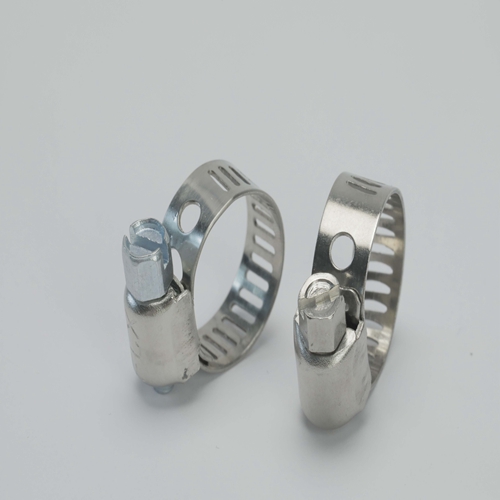
Conclusion
The adjustable stainless steel hose clamp stands as a critical component in maintaining the integrity and efficiency of countless industrial systems. Its combination of robust materials, precision engineering, and adaptable design makes it an indispensable fastener for B2B applications demanding longevity, reliability, and superior performance under diverse and challenging conditions. From preventing costly leaks in petrochemical pipelines to securing essential systems in marine environments, the advantages of these clamps are clear. By understanding the intricate manufacturing processes, adhering to rigorous technical specifications, and partnering with reputable hose clamp adjustable suppliers, industries can ensure their fluid conveyance systems operate at peak efficiency and safety. The continuous evolution of material science and manufacturing techniques promises even more advanced clamping solutions, further cementing their role as fundamental elements of modern industrial infrastructure.
References
- ASTM International. (n.d.). _ASTM A240/A240M, Standard Specification for Chromium and Chromium-Nickel Stainless Steel Plate, Sheet, and Strip for Pressure Vessels and for General Applications_. Retrieved from www.astm.org
- ISO. (n.d.). _ISO 9001: Quality management systems – Requirements_. Retrieved from www.iso.org
- SAE International. (n.d.). _SAE J1508, Hose Clamp Specifications_. Retrieved from www.sae.org
- NACE International (now AMPP). (n.d.). _NACE MR0175/ISO 15156, Petroleum and natural gas industries—Materials for use in H2S-containing environments in oil and gas production_. Retrieved from www.ampp.org
- ASM International. (n.d.). _ASM Handbook Volume 1: Properties and Selection: Irons, Steels, and High-Performance Alloys_. Retrieved from www.asminternational.org
This is the last article
-
Premium Adjustable Stainless Steel Hose Clamps for Secure Sealing
NewsAug.25,2025
-
Premium Stainless Steel Hose Clamp - Durable & Rust-Proof
NewsAug.24,2025
-
Premium 201 Stainless Steel Strip - Durable & Cost-Effective
NewsAug.23,2025
-
Precision High Quality Stainless Steel Strip Coils & Rolls
NewsAug.22,2025
-
Durable Adjustable Hose Clamps for Pipes & Radiators
NewsAug.21,2025
-
Heavy Duty Hose Clamps: Premium Stainless Steel & Adjustable
NewsAug.19,2025

